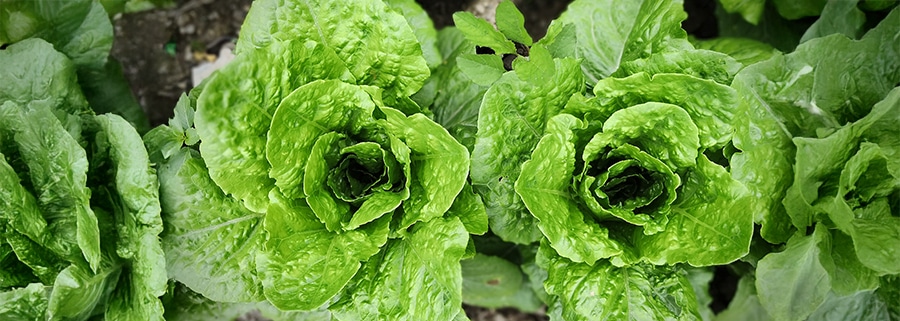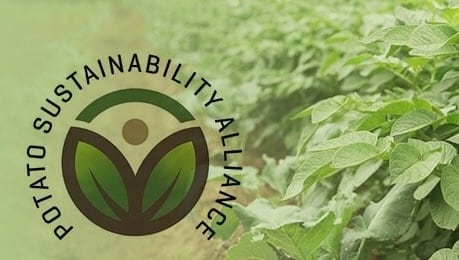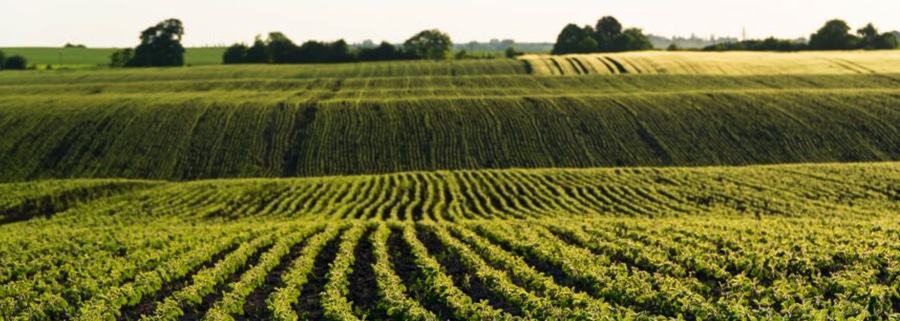Understanding safe crop production of leafy greens and maintaining profitability in specialty crops
In today’s market, growers face mounting pressure to uphold food safety at every turn. Leafy greens have gained an unfortunate reputation for being frequently recalled due to contamination with pathogens like E. coli, Salmonella, and Listeria. These outbreaks shake consumer confidence, cost growers millions, and put public health at risk.
The Leafy Greens Marketing Agreement (LGMA) was created to change that. This voluntary but rigorous food safety program was designed to help growers maintain the highest safety standards so that lettuce, spinach, and other leafy greens are produced, harvested, and handled as safely as possible. Since its creation, the LGMA has set the standard for food safety in agriculture, so much so that over 90% of the nation’s leafy greens now come from LGMA-certified farms. With two key production hubs, (California, which produces 70% of the country’s leafy greens, and Arizona, which accounts for 25%), the LGMA’s reach is massive.
But the real power of the LGMA is in its proactive approach. Instead of responding to contamination after an outbreak has already happened, the LGMA focuses on prevention. It enforces strict safety measures, including regular water testing, soil health monitoring, worker hygiene protocols, and third-party audits. This system reduces risks and helps protect the industry’s reputation to keep consumers buying leafy greens with confidence.
So, how exactly does the LGMA work? Why is it essential for leafy greens? And how does Tidal Grow® AgriScience help growers meet requirements while boosting profitability? This article breaks it down.
How the LGMA ensures food safety from field to harvest
Navigating food safety can be overwhelming, especially with standards that continue to evolve. That’s where the LGMA comes in. It provides a clear, science-based framework to help leafy greens growers reduce risk in real-world conditions. While the guidelines are strict, they’re designed to protect the entire supply chain, from growers to consumers. And at Tidal Grow AgriScience, we’re here to support that effort with compliant, proven solutions that make day-to-day implementation easier.
One of the LGMA’s biggest strengths is accountability. Every LGMA-certified grower undergoes mandatory government audits multiple times per year. These can be scheduled or unannounced, which ensures that food safety isn’t a mere box to check but a real, daily practice. If an audit finds that a farm isn’t complying, corrective actions are immediately required. Repeat violations can lead to removal from the program.
Breaking the chain of contamination before it starts
This level of food safety is the result of carefully controlling every step of the growing process, from the water used for irrigation to the way crops are handled post-harvest. That’s why the LGMA enforces rigorous food safety standards in four critical areas.
1. Water quality and testing
Since irrigation water is one of the most common pathways for bacterial contamination, the LGMA requires farmers to test all water sources regularly. If any sample fails to meet microbial safety standards, mandatory corrective actions are instated, whether that means treating the water, finding a new source, or changing irrigation methods. These strict testing requirements help prevent outbreaks linked to waterborne pathogens like E. coli.
2. Soil health and amendments
The LGMA has strict regulations for the use of compost, manure, and soil amendments to prevent contamination from animal waste. All soil amendments must be properly treated and tested to make sure they don’t introduce harmful bacteria into the growing environment. Growers must also take proactive steps to prevent cross-contamination, such as keeping untreated manure far from fields where leafy greens are grown.
3. Worker hygiene and sanitation
The LGMA mandates strict hygiene protocols so that everyone handling leafy greens, whether in the field or a processing facility, understands and follows food safety best practices. This includes:
- Handwashing requirements before and after handling crops
- Protective clothing policies to reduce direct contact with produce
- Regular sanitation of equipment and facilities to prevent bacteria from spreading
4. Post-harvest handling and storage
Even if crops are grown and harvested safely, improper storage and handling can introduce contamination late in the process. To prevent this, the LGMA requires:
- Immediate cooling of harvested greens to slow bacterial growth
- Sanitization of packaging facilities and transport equipment
- Strict traceability measures so that if a food safety issue arises, affected products can be identified and recalled quickly
Why LGMA standards matter for growers
For growers, food safety goes beyond compliance. It’s about survival. The consequences of a single romaine lettuce recall, for example, can be devastating, leading to financial losses, legal liability, and reputational damage that can take years to recover from. LGMA-certified farms reduce their risks by making sure that food safety protocols are built into their growing practices rather than treated as an afterthought.
Why leafy greens are more susceptible to contamination than other crops
Even with these standards in place, leafy greens present unique food safety challenges that other crops don’t face, making contamination prevention the only line of defense between a safe product and a public health outbreak.
But why do leafy greens face such a high risk of contamination compared to other crops? It comes down to four key factors.
1. Leafy greens grow close to the ground
Unlike crops that grow on trees or vines, lettuce and leafy greens develop directly in the soil, where they are constantly exposed to environmental contaminants. This includes:
- Irrigation water that may carry E. coli, Salmonella, or Listeria from runoff
- Animal waste from nearby farms, which can introduce dangerous pathogens
- Windblown dust and contaminants that can settle on leaves before harvest
2. No “kill step” in food preparation
Unlike foods that are cooked—where heat destroys harmful pathogens—leafy greens are typically eaten raw. This means they don’t go through a “kill step” that would eliminate harmful bacteria. Without this built-in layer of protection, any contamination that occurs in the field or during processing can be carried directly to the consumer.
3. Washing is not always effective
It’s easy to assume that a quick rinse under the faucet will remove any lingering bacteria, but the reality is more complicated. The very nature of leafy greens makes them difficult to fully sanitize because:
- Their delicate, porous structure allows bacteria to cling to the surface and settle into tiny crevices
- Some pathogens, such as Listeria, can attach to cut surfaces of greens and continue multiplying even under refrigeration
- Pre-washed, bagged salad mixes may undergo chlorine rinses, but if one contaminated leaf enters the system, it can spread bacteria across an entire batch
4. High-risk processing and transport conditions raise the stakes in the field
Once leafy greens are harvested, growers have little control over what happens next. Mass processing, packaging, and distribution create new opportunities for contamination, which is why it’s critical for growers to prevent pathogens from ever entering the system in the first place.
- Shared processing equipment, if not sanitized properly, can transfer bacteria between batches
- High-humidity storage conditions can promote bacterial growth
- Long transportation distances, where temperatures fluctuate, may allow pathogens to survive
The industrial scale of leafy greens production means that if contamination happens at any point in the supply chain, it can spread rapidly across multiple farms, processing plants, and grocery stores, making proactive food safety at the grower level more important than ever.
Lessons from recent contamination outbreaks
If these risks sound theoretical, they aren’t. Romaine lettuce recalls have made headlines repeatedly, with outbreaks linked to E. coli causing serious illnesses and even fatalities.
One of the most infamous incidents occurred in 2018 when an E. coli outbreak tied to romaine lettuce from Yuma, Arizona, impacted over 200 people across multiple states. The outbreak resulted in five deaths and dozens of hospitalizations, triggering one of the largest recalls in recent food safety history. More recently, bagged salad products from major brands have been recalled due to Listeria contamination. This emphasizes how packaging and processing play a major role in food safety, even after crops leave the farm.
These cases are why preventative food safety programs like the LGMA are so critical. The only way to stop outbreaks before they happen is by identifying and addressing contamination risks at every stage, which is exactly what LGMA standards are designed to do.
The industry’s response: raising the bar for safety
After each outbreak, the leafy greens industry has responded by tightening safety standards. LGMA members now follow even stricter protocols for water testing, soil management, and post-harvest handling to make sure history doesn’t repeat itself.
Additionally, technology is playing a bigger role in food safety:
- Improved traceability systems help identify contaminated batches faster
- Enhanced pathogen testing before shipping allows for safer products
- More frequent government audits provide stronger oversight
While foodborne illness outbreaks can never be eliminated entirely, proactive steps taken by the leafy greens industry are making contamination events less frequent, better contained, and more preventable than ever before.
How Tidal Grow AgriScience’s products support LGMA-compliant farms
Beyond food safety guidelines, producing safe, high-quality leafy greens requires reliable, contaminant-free agricultural inputs. At Tidal Grow AgriScience, we take this responsibility seriously. We ensure that our products align with the LGMA’s exacting food safety standards while also supporting soil health and plant growth—and ultimately, grower profitability.
For growers working within LGMA compliance, every input matters. Contaminated fertilizers, soil amendments, biologicals, or biostimulants can introduce pathogens into the production cycle, undermining even the strictest food safety protocols. That’s why we cold-process and challenge-test our biofertilizer products to meet and exceed industry expectations, giving growers confidence that our solutions meet LGMA standards.
Engineered and manufactured for safety and compliance
Our alternative fertilizers isthat help growemeet LGMA food safety standards include:meet LGMA food safety standards include:
- Oceanic®: A cold-processed hydrolysate fertilizer formulated to enhance soil biology, improve nutrient uptake, and promote beneficial fungi growth, supporting crop vitality and LGMA compliance
- Oceanic® Organic: An organic-certified cold-processed hydrolysate fertilizer that offers the same soil health benefits and LGMA standards as Oceanic
- SeaPhos®: A cold-processed hydrolysate fertilizer designed to deliver sustained forms of phosphorus, accelerate nutrient cycling, and comply with LGMA pathogen-free safety guidelines
- SeaPhos® Organic: An organic-certified cold-processed hydrolysate fertilizer that delivers the same benefits as SeaPhos as well as LGMA compliance
- Tidal Grow® Spectra™: A biopesticide exempt from LGMA pathogen testing requirements (Section 7b[2]), Tidal Grow® Spectra™ offers effective pest and pathogen control and activates natural plant defenses; approved for leafy greens
A meticulous testing process: no shortcuts, no contaminants
Our LGMA testing protocols are designed so that every order requested by our customers to meet LGMA standards will be:
- Segregated and sampled by our certified staff before shipping to prevent cross-contamination
- Hand-delivered by our LGMA-trained and certified staff to an independent laboratory for pathogen testing
- Analyzed for Salmonella spp., Listeria monocytogenes, and Escherichia coli O157:H7 (a strain that qualifies as both a fecal coliform and a Shiga toxin-producing E. coli [STEC], all of which are target organisms of concern under LGMA guidance)
- Results are received within 24 hours and shared with the customer
Proprietary cold-process manufacturing: pathogen-free biofertilizers with superior nutrient integrity
Tidal Grow AgriScience products consistently meet LGMA standards because of our proprietary cold-process manufacturing method with acid stabilization. This specialized process effectively eliminates pathogens of concern such as E. coli, Salmonella, and Listeria while carefully preserving the quality and potency of marine-based beneficial microbes, nutrients, and enzymes. Our recent studies have confirmed that this method consistently reduces pathogen levels below detectable limits (<0.95 log CFU/g) within three to seven days. The result is a powerful, safe, and stable biofertilizer and biostimulant that provides immediate benefits once applied to fields.
18 years, zero contamination, 100% trust
For 18 years straight, our products have been put to the test. And in nearly two decades of careful lab testing, here’s what we’ve found:
- Zero E. coli
- Zero Salmonella
- Zero Listeria
The future of food safety and profitability in agriculture
All in all, food safety standards never stand still. The LGMA continually upgrades its protocols to get ahead of evolving pathogen risks, including increased government audits, stronger traceability methods, and enhanced pathogen testing. These improvements mean growers will need to keep adapting to stay compliant and safe.
Yet compliance alone doesn’t guarantee success. Growers must also maintain efficiency and profitability in agriculture. This is why biofertilizers and biostimulants for plants are quickly becoming essential. Revolutionary products like these allow growers to enhance crop resilience, boost yields, and ensure soil health, all while meeting strict LGMA guidelines.
Tidal Grow AgriScience is leading this shift. Our biofertilizers and biostimulants deliver safe, compliant solutions that enable leafy greens growers to stay ahead of food safety risks without sacrificing profitability. Continuous innovation, backed by thorough testing and practical field results, means Tidal Grow AgriScience products help growers produce safe, profitable crops year after year.
Ready to boost your leafy greens’ safety, yield, and profitability?
Explore how Tidal Grow AgriScience’s LGMA-compliant biofertilizers can help your farm thrive both today and into the future.
*Because not all crops require LGMA certification, LGMA testing is available upon request. Contact a Tidal Grow AgriScience team member for more information.
Citations
(2024, February 9). Dole Fresh Vegetables, Inc. Announces Voluntary Recall of Limited Number of Salad Kits Due to Possible Health Risk from Listeria Monocytogenes. U.S. Food & Drug Administration. https://www.fda.gov/safety/recalls-market-withdrawals-safety-alerts/dole-fresh-vegetables-inc-announces-voluntary-recall-limited-number-salad-kits-due-possible-health
(2024, March 5). Microbiological Surveillance Sampling: FY21 Sample Collection and Analysis of Lettuce Grown in Salinas Valley, CA. U.S. Food & Drug Administration. https://www.fda.gov/food/sampling-protect-food-supply/microbiological-surveillance-sampling-fy21-sample-collection-and-analysis-lettuce-grown-salinas
Arizona Leafy Greens Food Safety Committee. (n.d.). Arizona LGMA. https://www.arizonaleafygreens.org/
California Leafy Greens Marketing Agreement. (n.d.). Leafy Greens Marketing Agreement (LGMA). https://lgma.org/
Centers for Disease Control and Prevention. (2018, April 13). 2018 E. coli outbreak linked to romaine lettuce. National Center for Emerging and Zoonotic Infectious Diseases (NCEZID), Division of Foodborne, Waterborne, and Environmental Diseases (DFWED). CDC Archive. https://archive.cdc.gov/#/details?url=https://www.cdc.gov/ecoli/2018/o157h7-04-18/index.html
Coleman, P. A. (2024, August 1). Clean greens: How CEA leafy greens growers can tackle food safety and improve community health. Produce Grower. https://www.producegrower.com/article/leafy-greens-food-safety-recalls-cea-water/
Murphree, J. (2024, January 7). Rosie on the House: The Latest About our Arizona Leafy Green Industry. Arizona Farm Bureau. https://www.azfb.org/Article/Rosie-on-the-House-The-Latest-About-our-Arizona-Leafy-Green-Industry
United States Department of Agriculture. (n.d.). Arizona Leafy Greens Marketing Agreement. https://www.ams.usda.gov/services/auditing/gap-ghp/AZ-lgma
U.S. Food and Drug Administration. (n.d.). Leafy greens STEC action plan. https://www.fda.gov/food/foodborne-pathogens/leafy-greens-stec-action-plan
Western Growers Science. (n.d.). Continuous improvement: Striving for safe leafy greens. Leafy Green Guidance. https://www.leafygreenguidance.com/








